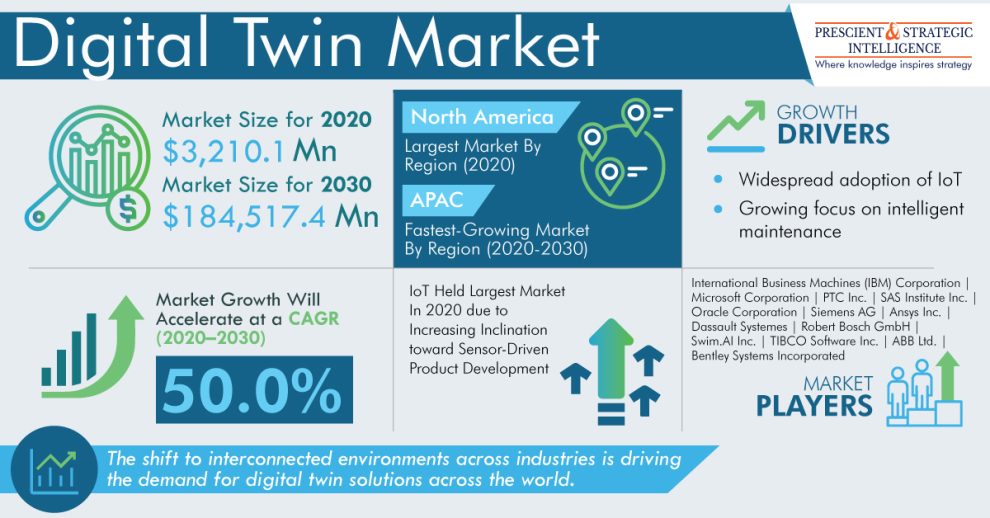With the increasing rate of digitization, internet connectivity is moving beyond computers, tablets, and mobile phones. Every kind of machine and even buildings are being integrated with sensors and internet connectivity so that real-time data on their operations can be gathered and the operations optimized. The pace of sensor integration is so high that by 2025, over 41 billion connected devices are expected to be in operation around the world.
This is why P&S Intelligence expects the digital twin market size to display a massive 50.0% CAGR between 2020 and 2030, to reach $184,517.4 million by 2030 from $3,210.1 million in 2020. This is because keeping track of the data being generated by each and every sensor in a machine is slightly difficult individually. This is why the data is used to create a virtual representation of how the entire machine or any other piece of connected infrastructure is performing, so that problems with the functioning can be identified and action taken before any real damage occurs.
Apart from predictive maintenance, digital twins are used for performance monitoring, business optimization, product design & development, inventory management, fault detection, and anomaly detection. This is why almost every industry, including manufacturing, healthcare, automotive, energy & utilities, oil & gas, aerospace & defense, retail, hospitality, banking, financial services, & insurance (BFSI), and chemical, are using them. Among these, the manufacturing sector makes the most use of this technology because of the rapid implementation of Industry 4.0 standards, which include the integration of IoT sensors in machines.
In the same way, the automotive industry will become a significant user of digital twins in the coming years. With the growing competition among automakers, they are trying to get an edge with cutting-edge technologies in automobiles. Digital twins are not just created here for the production machines, but also for the simulation of vehicle designs, so that their performance can be tracked and modifications made. In this regard, the ongoing research studies and pilot projects on connected and autonomous vehicles, which are equipped with a multitude of sensors, will drive the usage of the technology.
To make operations and performance analysis easier and cheaper, companies are using a single platform for the digital twins of multiple objects and processes. For instance, aerospace and aviation companies that must manage a large fleet of jet engines are simulating them through their sensors one on platform. This is done by bringing the digital platforms of individual engines on a single platform so the pattern in operational metrics can be analyzed and they can be improved at once.












Add Comment